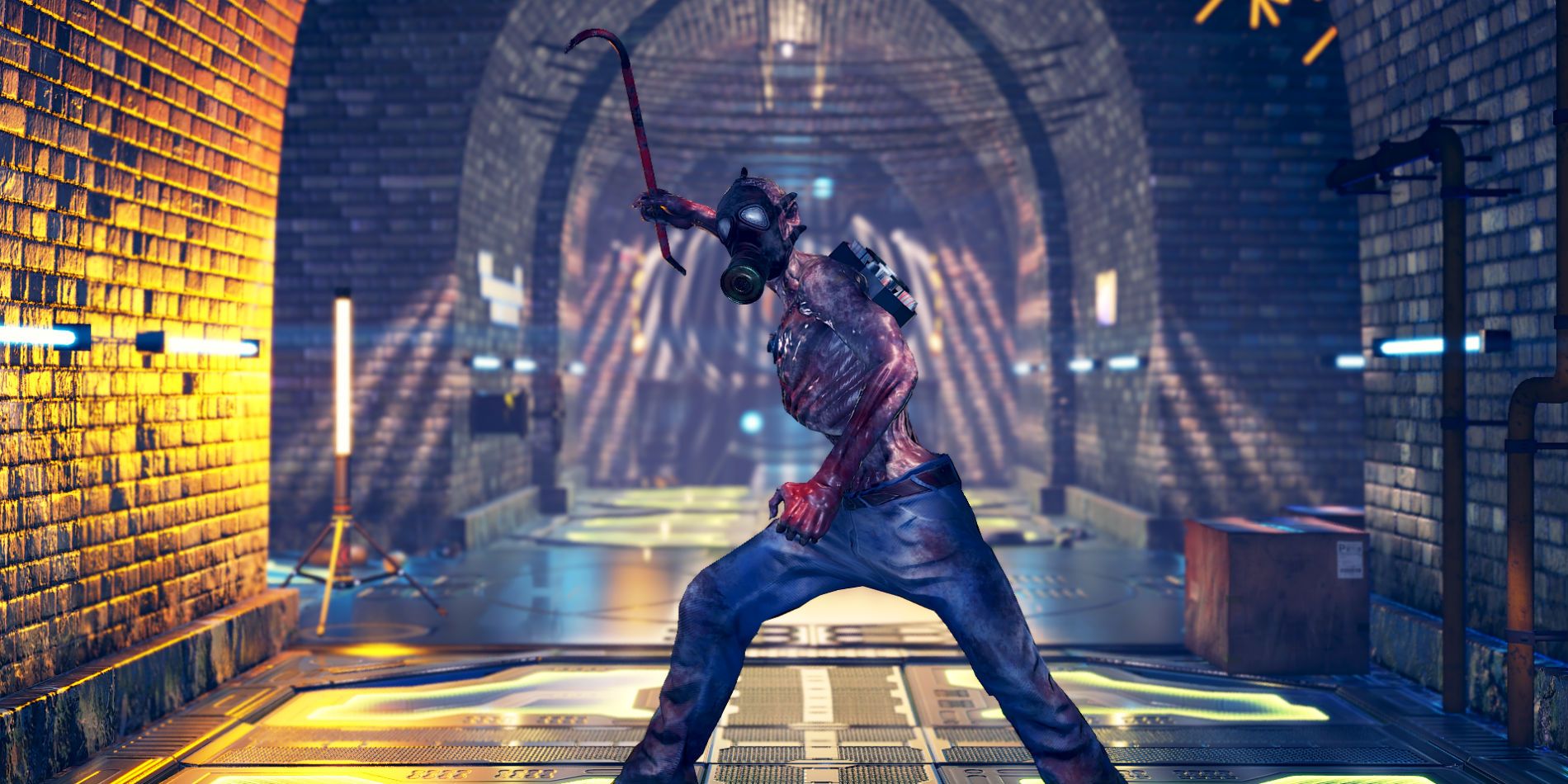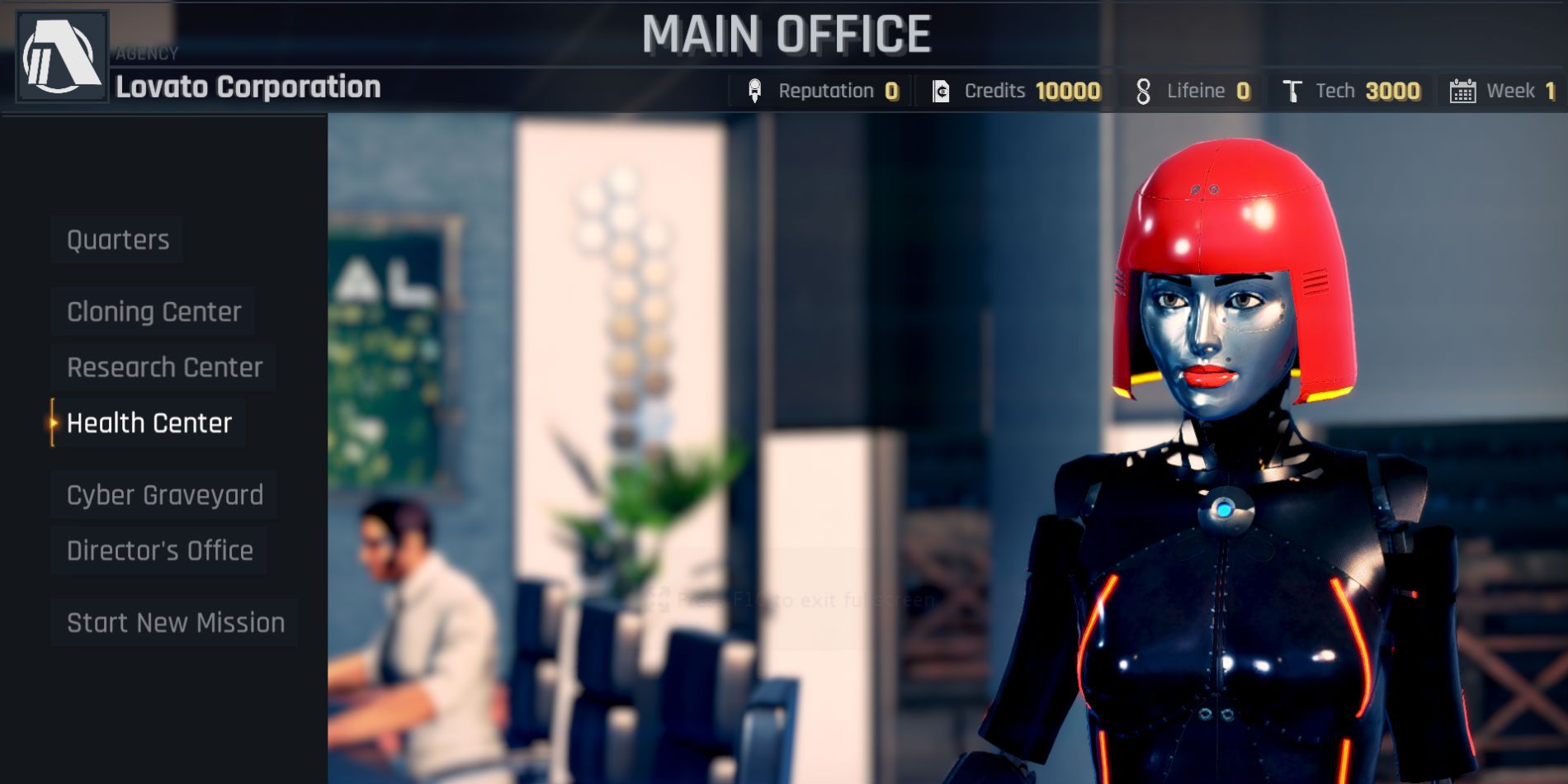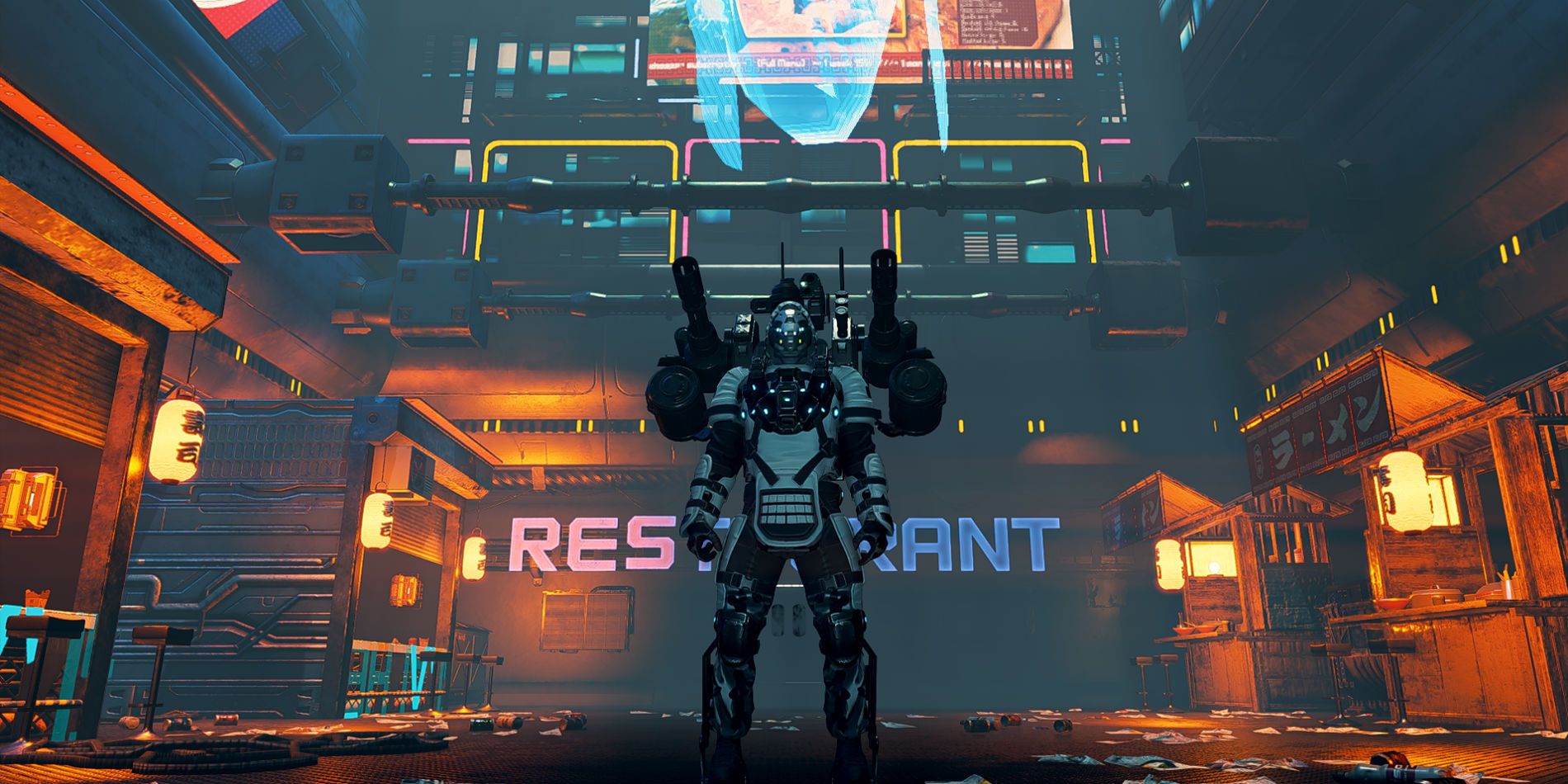The cyberpunk genre is very much in the cultural eye at the moment, at least in the video game industry. CD Projekt Red's upcoming Cyberpunk 2077 remains one of the most anticipated video games of the year, despite release delays. To pass the time, RuneHeads has developed a different cyberpunk experience in the form of Conglomerate 451, a roguelike dungeon-crawler which illustrates the grim, dehumanizing nature of privatized technological progress but which fails to use that technological progress to make a memorable game.
Conglomerate 451 puts the player in command of a paramilitary defense agency that produces squadrons of "battle clones," expendable human simulacrums that venture into the crime-filled city of Conglomerate to bring down the corporations that have taken it over. The game's story mode takes place over 75 weeks, with one week dedicated to each mission you send a squad to carry out. Conglomerate city is divided into five distinct zones, each with their own unique aesthetic style. Each mission will send you to one of them with a specific goal to carry out, like finding an important MacGuffin or killing a certain enemy. A successful mission will weaken one of the four corporations you're targeting during your playthrough. These corporations are procedurally generated and very short on distinguishing traits. A sidebar on the mission prep screen informs you when they were founded, what their boss's name is, and what their preferred crime is (presented in one word, like "guns" or "slave") but this information has little to no impact on gameplay, and since the corporations' names are procedurally generated as well, you'll generally be identifying them solely based on their logos.
You can create a sizable roster of clones, fourteen at the start of the game, and choose three to participate in any given mission. You design clones in your own in-house cloning center, choosing from a list of "backgrounds" (classes) and outfitting them with four abilities from a list of seven or so. Each background has specialties that range from clear and easy to build around to niche and very particular. The bodyguard is a simple background, a short-range tank who specializes in protecting his allies. The Juicer is a bit more complicated; this background revolves around taking drugs and using them to augment his abilities. His specialties and tactics may differ depending on what drugs you have available for him to take. Each background has a set gender and appearance; every clone of any given background will look identical to every other one. The only level of customization you have aside from designing their kit is naming them and assigning them an accent color that frames their icon in your HUD.
The base gameplay is reminiscent of 3rd-person dungeon crawlers like Legend of Grimrock. Your squad moves as a single unit, using WASD to move and Q and E to change the direction they're facing. Combat is a turn-based affair; each unit is assigned a place in initiative, and on their turn you select a skill and click on the intended target. Attacks can be directed at specific places on the target's body, and you have a chance of inflicting certain debuffs depending on where you shoot. Each unit, ally or enemy, has a health bar and a shield bar. The shield absorbs damage until it's gone, at which point the unit will start taking damage to their health directly. Conceptually, this is far from a unique idea, but in execution it makes combat a somewhat tiresome affair. As soon as an enemy's shield is gone, they go down in one or two hits. Your units' shields, meanwhile, are almost impervious, and can be replenished during or out of combat by spending some of the unit's battery resource. As long as you remember to keep your shields charged, most fights are going to offer little to no challenge to you. This also means that healing abilities are all but useless unless things get very dire, and using one of your precious three roster spots for a healing clone just to prepare for the worst-case scenario is hardly a good idea when said healer will be largely without purpose for most if not all of the dungeon.
Selecting a good squad is paramount to success, as there are certain clone team ups that can completely cripple you. That being said, there's little reason to experiment; once you've found a team that works, there's little incentive to shake things up. Units will rarely get afflictions that require them to take time off from adventures to recuperate. The most common form these afflictions take is physical trauma, which will require a clone to be sent to the health center. But physical trauma is only inflicted when the clone's Pain meter (which fills when they take damage) gets high enough, and, more importantly, when they take damage to their health bar. This means that even with a dangerously high Pain meter, a clone will likely still be perfectly fine to adventure as many times as you need to. Overusing drugs is another possible affliction source, as it can lead to mental disorders that can inflict debuffs in combat. But because of this, there's not much motivation to use drugs, unless you have a Juicer; if your team is solid combat's easy enough without them.
In addition to recuperating and creating soldiers, Conglomerate 451 offers a wealth of options for how to spend your time outside of missions. Your Research Center has five paths of study to focus on, each with their own tree of perks that can further increase and refine your options. In the Quarters you can promote units, upgrade their gear, and even give them cybernetic implants to grant them additional power in combat. You also have the archives, where you can attempt to decode bits of lore you find in the field and learn more about the dystopian world in which you live. You can also find special computer chips in the field which can be slotted into weapons, gear, and cybernetic limbs and offer further advantages; the amount of things you can do between missions is nothing short of staggering, and that's not always a good thing.
The game has three forms of currency; the sci-fi stand-by credits, Tech, and an illegal, DNA-based substance called "Lifeine." Credits are easy to come by but tech and Lifeine are much rarer commodities. Lifeine is mostly used for buying illegal goods from shady characters you meet on the street, but Tech is used for basically everything, and always runs out quicker than you need it to. Given the sheer wealth of options and the sheer dearth of Tech to spend pursuing these options, the player will usually be overwhelmed between missions in an attempt to determine the best course of action. Progression through the various upgrade options feels too slow, since your pockets run out too fast.
If the game excels at anything, it's the environments. Each of the six zones in Conglomerate feel distinct, unique, and interesting. Exploring them isn't always a blast, as combat is repetitive and easy and, unlike Legend of Grimrock, there aren't really any secret treasures or puzzles to attract the attention. But they do look great, and the background info you're presented with is pretty interesting. Conglomerate 451 is every bit a cyberpunk game, and the environments show this off to greatest effect.
Ultimately, Conglomerate 451 is a hard game to recommend. It's not a bad game, it's just too average for its own good. Just about everything the game does is done better by someone else. If you want a first-person dungeon crawler, there's Legend of Grimrock. If you want an RPG with a large roster of characters and permadeath, you're better off with Darkest Dungeon or something similar. Even the out of combat progression systems are better handled in games like X-COM. Conglomerate 451 is playing in a crowded space, and like the corporate drones in its own cyberpunk dystopia, it just can't establish its own identity.
Conglomerate 451 is out now on PC. A digital download code was provided to Screen Rant for purposes of review.




